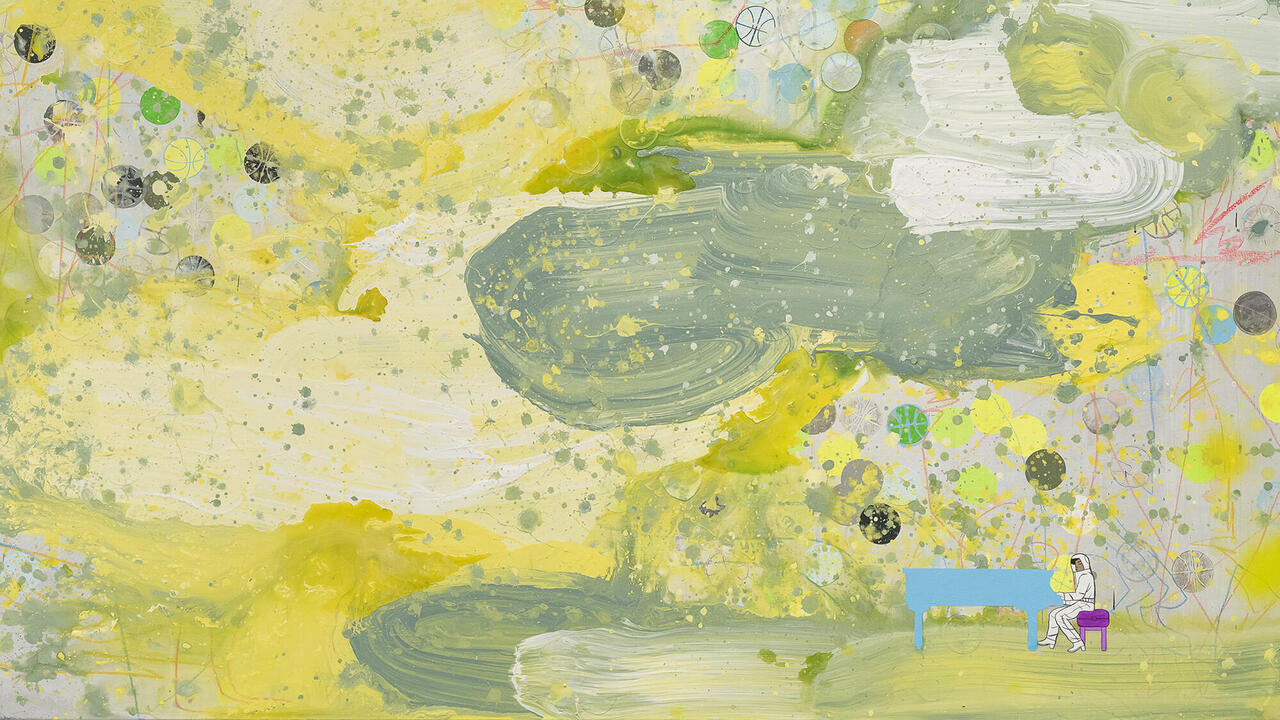The Visionary Landscape

The Romantics repeatedly mined the analogy between nature and psyche, the agitated gesture of the artist functioning as the relay between them, flickering at the threshold of mind and matter. It is perhaps curious that landscape, as a genre, is now considered one of the most genteel and anodyne - outside the mall and DIY television, it claims very few earnest practitioners. The school of ironic landscape, however, is now a fully established genre, but hardly inspires much more enthusiasm.
Underlying this particular practice is an ultimately didactic impulse devoted to revealing the cultural basis of our natural categories; to pull the wool from our eyes, as it were. Yet this is a lesson that art has some serious trouble imparting, and one that is likely to get lost in the lush packaging in which the ideas are usually presented in.
Most of the artists in 'The Visionary Landscape' wisely pre-empted this bad faith reasoning with genuinely fantastic visions of nature as a convoluted headspace. Their take is, for the most part, aggressively mediated - theirs is more an art about art than anything else. But what distinguishes these works is the sheer exuberant excess of their means, an aesthetic pile-on that runs the gamut from Caspar David Friedrich to Walt Disney. Where painting is concerned, this translates into an additive process - signs and gestures are patiently layered, deposited on the canvas surface one by one. Sharon Ellis exemplifies this approach in her painting The Four Seasons (1999), which condenses a range of painterly effects - sunbursts and storm clouds, raindrops and snowflakes, green and red leaves - falling through a composition minutely subdivided by the twisting, veiny black branches of a perfectly symmetrical and uncannily brain-like tree.
Similarly systematic are Marcelo Pombo's paintings, although his medium of choice is enamel, a comparatively stubborn and inflexible substance that he exploits to great effect in a series of manoeuvres that oscillate between mimesis and wanton psychedelia. Fussy brushwork alternates with almost aleatory passages where the paint is pooled and swirled into a dark marbleised skyline, and then dotted with raised and shimmering droplets of rain. Roxy Paine, meanwhile, takes this accretionary conceit full circle with a pristinely primed canvas that appears to be sprouting clusters of mushrooms - but which, in fact, are painstakingly painted plaster castings. Perhaps playing off Rauschenberg's famous seedbed work as well as his monochrome white paintings, but without any of the same allegiances to 'the real', this piece makes a strong case for the return of illusionism through the back door of hallucinatory experience.
Conversely, Jacci Den Hartog's piece Strolling Down Bamboo Lane (2000), is made entirely of organic materials: a long cane of bamboo, lined with small succulents in two rows along its top. Extending from one corner of the gallery to its centre, the shoots become progressively thinner away from its base, a perspectival effect that humourously confirms the conceit of its title. It makes very little difference whether this nature is real (as in this show) or artificial (as in her previous work); either way it is proposed as an intellectual experience.
A rough historical context is sketched out in the gallery's back-room. Between, on the one hand, Tony Tasset's full-scale photographic pantomime of Robert Smithson digging up dirt, Robert Smithson (Las Vegas) (1995), and on the other, Sergio Vega's classically elegant pen and ink ruminations on the Garden of Eden, The Expulsion (1999), we find ourselves deep in allegorical mode. Subsequent to the Fall, so the story goes, Adam's transparent language of Names would quickly degenerate into an opaque demonic babble. It makes perfect sense to resuscitate these biblical themes in relation to the subject of gardening, although in Southern California it seems as if they never really went away. Here, where the experience of nature is so openly steeped in artifice, it comes as no surprise that the landscape is something that can be 'read'. For the generation of artists that came to prominence in the early 90s this holds especially true - the breakdown of the traditional white-cube gallery system introduced a new paradigm, a more permeable, open-plan scheme. If the landscape has returned as a viable subject for art, it has been through this fantastic architectural gateway, as a design project first and foremost, and one that has always managed to confuse the relation between outside and in.
















